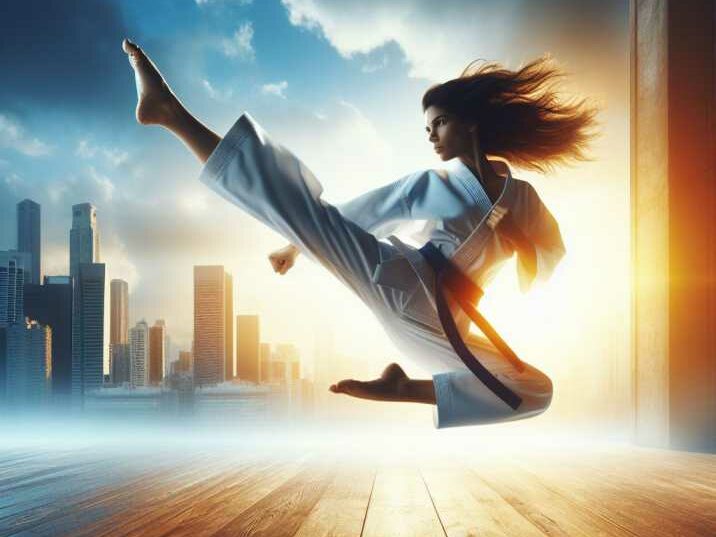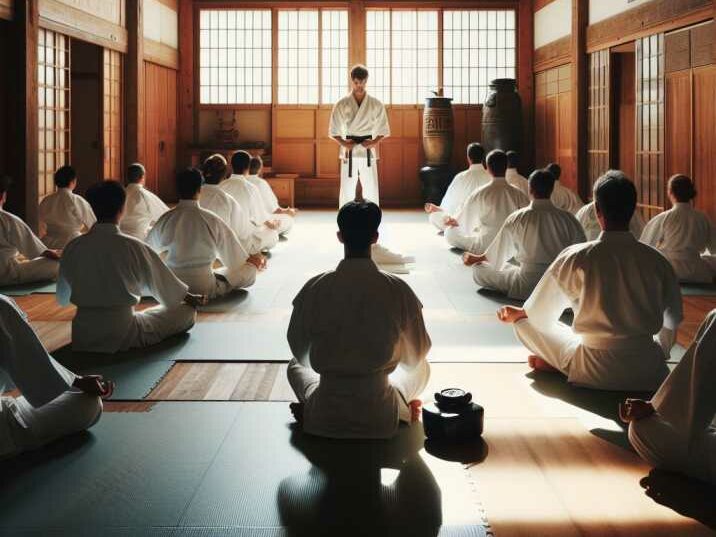Introduction:
Table of Contents
Karate, originating from the Ryukyu Kingdom, has evolved into a globally practiced martial art known for its discipline, strength, and agility. As it spread across the world, different styles emerged, each with its own unique techniques and philosophies. In this comprehensive guide, we’ll delve into the various styles of Karate, exploring their origins, characteristics, and key differences.

Exploring the Different Styles of Karate:
1. Shotokan Karate:
Origin: Developed by Gichin Funakoshi, Shotokan Karate emphasizes powerful, linear movements and deep stances.
Techniques: Focuses on strong punches, kicks, and blocks executed with precision and speed.
Philosophy: Emphasizes self-development, discipline, and respect for tradition.
2. Goju-Ryu Karate:
Origin: Founded by Chojun Miyagi, Goju-Ryu combines hard and soft techniques, incorporating circular movements and breathing exercises.
Techniques: Known for its close-range combat techniques, including grappling and joint locks.
Philosophy: Blends Zen Buddhist principles with Okinawan martial traditions, promoting balance and harmony.

3. Wado-Ryu Karate:
Origin: Created by Hironori Ohtsuka, Wado-Ryu emphasizes fluid movements and evasion techniques inspired by Jujutsu.
Techniques: Incorporates joint locks, throws, and takedowns alongside striking techniques.
Philosophy: Stresses the importance of adaptability and fluidity in combat, focusing on efficiency over brute force.
4. Kyokushin Karate:
Origin: Founded by Masutatsu Oyama, Kyokushin is renowned for its full-contact sparring and rigorous training regimen.
Techniques: Emphasizes powerful strikes and kicks, with a focus on conditioning and endurance.
Philosophy: Promotes mental toughness, humility, and perseverance through intense physical training.
5. Shito-Ryu Karate:
Origin: Established by Kenwa Mabuni, Shito-Ryu integrates elements of both hard and soft styles, incorporating linear and circular movements.
Techniques: Includes a wide range of techniques, from fast strikes to grappling and throws.
Philosophy: Advocates for versatility in combat, adapting techniques to suit different situations and opponents.
Table of Information Styles of Karate :
| Styles of Karate | Originator | Characteristics |
|---|---|---|
| Shotokan | Gichin Funakoshi | Linear movements, strong punches & kicks |
| Goju-Ryu | Chojun Miyagi | Hard and soft techniques, circular moves |
| Wado-Ryu | Hironori Ohtsuka | Fluid movements, evasion techniques |
| Kyokushin | Masutatsu Oyama | Full-contact sparring, powerful strikes |
| Shito-Ryu | Kenwa Mabuni | Blend of hard and soft styles |
Conclusion:
In the world of styles of Karate, diversity thrives, with each style offering its unique blend of techniques, philosophies, and training methods. Whether you’re drawn to the discipline and precision of Shotokan or the resilience and endurance of Kyokushin, there’s a style of Karate suited to every practitioner’s preferences and goals. By exploring these different styles, we gain not only a deeper understanding of Karate’s rich history but also insights into its enduring appeal as a martial art and way of life.
FAQs:
- Q: What is the most popular style of Karate? A: Shotokan Karate is among the most popular styles globally, known for its emphasis on strong, linear movements and traditional training methods.
- Q: Can anyone learn Karate? A: Yes, Karate is suitable for people of all ages and fitness levels. With dedication and practice, anyone can improve their skills and benefit from its physical and mental rewards.
- Q: Is Karate only about fighting? A: While Karate involves combat techniques, its focus extends beyond mere physical confrontation. It promotes self-discipline, respect, and personal growth, fostering a holistic approach to martial arts practice.
- Q: How long does it take to become proficient in Karate? A: The time it takes to become proficient in Karate varies depending on individual dedication, practice frequency, and the complexity of the style. Consistent training over several years is typically required to attain mastery.
- Q: Can Karate be practiced competitively? A: Yes, many Karate styles offer opportunities for competitive sparring and tournaments. These events provide practitioners with a platform to showcase their skills, test their abilities, and engage with fellow enthusiasts in a supportive environment.


